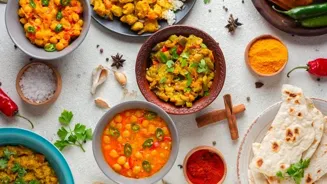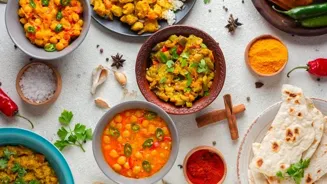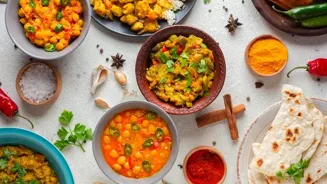Dive into the World of Indian Chutneys: Recipes & Pairing Suggestions. Explore vibrant flavors & culinary creativity!
Chutneys, aren’t they just the zing our Indian meals need? From the quintessential mint-coriander
to tangy tamarind, these flavour bombs elevate the simplest dishes. Forget just 'side dish'; chutneys are culinary superstars in their own right.
They add layers of flavour, contrasting textures, and a burst of freshness that can transform your roti-sabzi into a gastronomic adventure. Join us as we explore the colourful and diverse world of Indian chutneys, complete with easy recipes and spot-on pairing suggestions.
Regional chutneys offer diverse flavors for every dish
The beauty of chutneys lies in their sheer variety. Each region boasts its own unique repertoire, reflecting local ingredients and culinary traditions.
Think of the fiery red chilli chutney of Rajasthan, the sweet and sour date-tamarind chutney of Gujarat, or the coconut chutney so beloved in South India. This diversity means there's a chutney for every palate and every dish.
The ingredients range from fresh herbs and vegetables to roasted spices and fruits, creating an endless array of flavours and textures. Whether you prefer a smooth, creamy consistency or a coarse, rustic bite, there's a chutney out there waiting to be discovered.
Knowing the basics allows you to experiment and create your own customized version.
Let's start with a classic
Mint-Coriander Chutney. This vibrant green chutney is a staple in many Indian households.
For this you need, 1 cup fresh mint leaves, 1 cup fresh coriander leaves, 2-3 green chillies (adjust to your spice preference), 1-inch piece of ginger, roughly chopped, 2-3 cloves of garlic, 1 tablespoon lemon juice, Salt to taste, and a splash of water (if needed).
Wash the mint and coriander thoroughly. Combine all ingredients in a blender and blend until smooth. Add a little water if the mixture is too thick. Adjust the seasoning with salt and lemon juice. It’s simply the perfect partner for samosas, pakoras, tikkis, and even sandwiches.
The fresh, cooling flavour cuts through the richness of fried foods, providing a delightful balance. You can also spread it on rotis or use it as a dip for grilled vegetables. Its versatility makes it an indispensable condiment in any Indian kitchen.
Tangy tomato chutney recipe for South Indian dishes
Next is a Tomato Chutney. A great option that’s tangy and packs a flavorful punch.
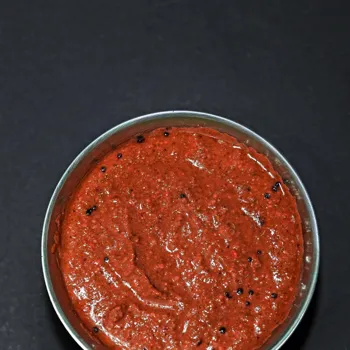
Items for this easy to make dish, requires 2 large tomatoes, 1-inch piece of ginger, roughly chopped, 2-3 cloves of garlic, 1-2 green chillies (optional), 1 teaspoon cumin seeds, ½ teaspoon mustard seeds, A pinch of asafoetida (hing), 1 tablespoon oil, Salt to taste, and a sprig of curry leaves (optional).
Chop the tomatoes into small pieces. Heat oil in a pan. Add cumin seeds and mustard seeds. Once they splutter, add asafoetida and curry leaves (if using). Add ginger, garlic, and green chilies (if using) and sauté for a minute. Add the chopped tomatoes and salt.
Cook until the tomatoes soften and the chutney thickens, about 10-15 minutes. Let it cool slightly and then blend to a smooth or coarse consistency, depending on your preference. Serve it with dosa, idli, uttapam, or even as a side for rice and dal.
The tangy and spicy flavour complements the subtle taste of South Indian dishes beautifully.
Now for a unique one
Peanut Chutney! Yes, groundnuts can make magic.
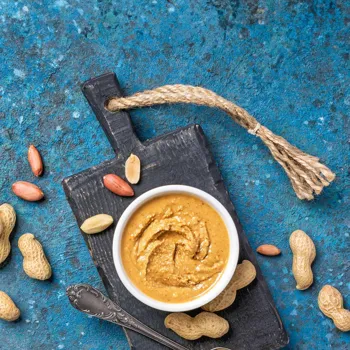
You will need 1 cup roasted peanuts, ½ cup roasted chana dal (split chickpeas), 2-3 red chillies (adjust to your spice preference), 1-inch piece of ginger, roughly chopped, 2-3 cloves of garlic, 1 tablespoon tamarind paste, Salt to taste, and Water as needed.
Grind the roasted peanuts and chana dal to a coarse powder. Combine the peanut-dal powder, red chillies, ginger, garlic, tamarind paste, and salt in a blender. Add a little water at a time and blend to a smooth or slightly coarse consistency. Adjust the seasoning to your liking.
It is served with idli, dosa, vada, or even as a side for rice. The nutty flavour and slightly spicy kick makes it a delightful accompaniment to South Indian breakfast dishes. You can also use it as a spread for sandwiches or wraps.
Classic South Indian coconut chutney recipe with tempering
Of course, no chutney discussion is complete without mentioning Coconut Chutney. This classic South Indian chutney is both refreshing and subtly sweet.
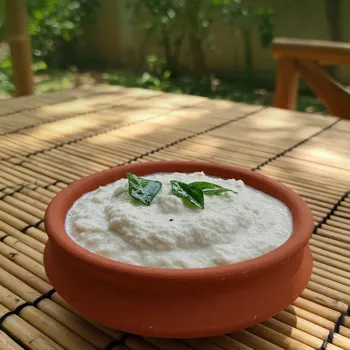
Ingredients are 1 cup grated fresh coconut, 2-3 green chillies (adjust to your spice preference), 1-inch piece of ginger, roughly chopped, 2 tablespoons roasted chana dal (split chickpeas), 2 tablespoons lemon juice, Salt to taste, and Water as needed.
and for tempering: 1 tablespoon oil, ½ teaspoon mustard seeds, A pinch of asafoetida (hing), and 1-2 dry red chillies, broken into pieces. Combine the grated coconut, green chilies, ginger, roasted chana dal, lemon juice, and salt in a blender.
Add a little water at a time and blend to a smooth consistency. For the tempering, heat oil in a small pan. Add mustard seeds. Once they splutter, add asafoetida and dry red chillies. Pour the tempering over the chutney. It’s wonderful when served with idli, dosa, vada, or uttapam.
The creamy texture and subtle sweetness of the coconut perfectly complements the savoury flavours of South Indian cuisine.
Experiment with ingredients and flavors to create unique Indian chutneys
These are just a few examples of the vast and delicious world of Indian chutneys. The key is to experiment with different ingredients and flavour combinations to find what you like best. Don't be afraid to get creative.
Roasting vegetables before blending them into a chutney can add a depth of flavour. Adding a touch of sweetness with jaggery or dates can balance the spice. And remember, fresh, high-quality ingredients are essential for making a truly exceptional chutney.
So go ahead, unleash your inner chutney artist and add a burst of flavour to your next meal. You can try customizing your existing recipes with new sets of ingredients or adding different things to modify the texture/ flavour.
Adjust spice levels to taste, use chutneys creatively in meals
Finally, remember to adjust the spice levels to your preference. If you're not a fan of heat, reduce the amount of chillies or use milder varieties. And don't be afraid to experiment with different pairings. Chutneys can be used in so many ways beyond just serving them as a side dish.
Try adding a spoonful to your yogurt or raita for extra flavour. Use them as a marinade for grilled vegetables or paneer. And spread them on your sandwiches or wraps for a delicious and healthy alternative to mayonnaise.
With a little creativity, you can incorporate chutneys into your everyday meals and enjoy the vibrant flavours of India with every bite. Make sure to store the chutney in an airtight container and refrigerated to extend the life span the chutney.
AI Generated Content. Glance/InMobi shall have no liability for the content